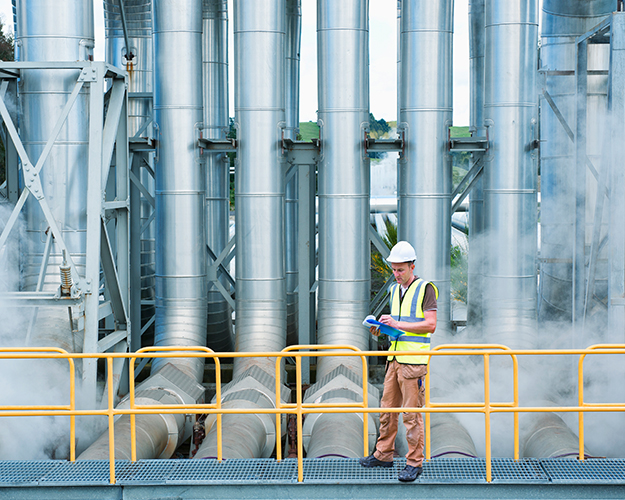Key Takeaways
- The Inflation Reduction Act of 2022 significantly increased the Section 45Q carbon capture credit, more than doubling the amount of credit allowed per ton of captured carbon.
- The Section 45Q increase allows a wide range of industries to profitably capture their carbon oxide emissions.
- For capture equipment placed in service after 2022, a credit of up to $85 a ton for carbon captured and sequestered ($60 a ton if captured and used) is available for 12 years, with the credit increasing by the rate of inflation in 2027 and later.
Section 45Q of the Internal Revenue Code was first enacted in 2008 to provide tax credits for capturing, storing, or using carbon oxide/dioxide. However, it provided only a limited benefit and was rarely used outside of the oil and gas and public utility industries. Statutory constraints limited the benefit of the original section 45Q credit, and consequently, many taxpayers did not focus on the credit.
The Inflation Reduction Act significantly increased the size of the credit, making it profitable for a wider range of industries to consider the necessary investment to capture and sequester or use emitted carbon.
Here’s what you need to know about Section 45Q and how to use it.
What Changes Were Made to the Section 45Q Credit?
Incentives introduced in 2023 include:
- Larger credit amount
- 12-year claim period from date capture equipment is placed in service
- Maximum credit requires compliance with prevailing wage and apprenticeship requirements
- Tax exempt entities may benefit from the credit.
- Credits that cannot be used in the current year because of insufficient taxable income can be:
- Carried back or carried forward
- Monetized through direct payment for the first five years
- Sold to an unrelated party for cash
- Transferred to parties engaged in the disposal or use of the captured carbon.
- Smaller facilities can be eligible (minimum eligibility thresholds reduced)
- Preferential depreciation rules (5 yr. MACRS) apply to carbon capture equipment
- Permitting owners of carbon capture equipment to claim tax credits instead of the person capturing the CO2.
Who Can Claim Section 45Q?
Any entity, including a tax-exempt entity, may claim the section 45Q credit if it captures some or all its carbon emissions to the extent the captured carbon is sequestered in secure geological storage or utilized for a commercial purpose.
Owning and placing carbon capture equipment into service can also generate a Section 45Q credit, with the credit claimed over a 12-year period beginning when the carbon capture equipment is placed into service.
- Under current law, eligible projects must begin construction before January 1, 2033.
What Qualifies for the Section 45Q Credit?
To qualify for the Section 45Q credit, industrial source carbon dioxide that would otherwise be released into the atmosphere must be captured and either:
- Securely stored through geological sequestration
- Fixed through photo or chemosynthesis
- Used as a tertiary injectant in a qualified enhanced oil or natural gas recovery project
- Utilized for a purpose for which a commercial market exists.
How Does a Taxable Entity Monetize the 45Q Credit?
Normally, business credits such as the 45Q credit are used to reduce current tax liability. If the credit exceeds the amount of current tax liability, no immediate benefit is allowed, and the excess is carried forward for use in future years.
However, special rules provide an opportunity to monetize the 45Q credit instead of applying it against a current tax liability.
The entity generating a section 45Q credit may:
- Sell the credit to an unrelated party for cash
- Transfer the credit to the party contracted to dispose or use that captured carbon
- Elect direct payment of the amount of the credit from the IRS (limited to the first five years for taxable entities).
For partnerships and S corporations, the Section 45Q credit is normally allocated in the same manner as partnership income or in accordance with the partners’ interests in the partnership. Utilization of the credit may then be dependent on the partner or shareholder’s tax situation.
Sale of the credit or an election to take a direct payment may be limited to the extent the partner or shareholder would not otherwise have been eligible to claim the credit in the current year.
What is the Amount of the Section 45Q Credit?
The Section 45Q credit amount depends on when the carbon capture equipment was placed in service, if prevailing wage and apprenticeship requirements were met, and the ultimate disposition of the carbon.
For carbon capture equipment placed in service after 2022, where prevailing wage and apprenticeship requirements were met, the Section 45Q credit is currently $85 per metric ton if sequestered and $60 per metric ton if utilized commercially.
Credit Recapture
The Section 45Q credit can be recaptured, resulting in a future tax liability, if a “recapture event” occurs during the “recapture period.” IRS regulations state a recapture event occurs when qualified carbon oxide/dioxide ceases to be disposed of in a “secure geological storage” or used as a “tertiary injectant.”
The recapture period begins on the date of the first injection of qualified carbon oxide/dioxide for disposal in secure geological storage or use as a tertiary injectant. The recapture period ends on the earlier of three years after the last taxable year in which the taxpayer claimed a Section 45Q credit (or was eligible to claim a credit that it elected to carry forward) or the date monitoring ends under the applicable standards.
How Eide Bailly Can Help with Section 45Q
Eide Bailly’s Business Credits & Incentives team will assess eligible credits and incentives available to your organization. Once identified we help quantify, document, claim, and monitor credits and incentives so you can maximize your tax savings.
Stay Up to Date

Energy Credits & Incentives Consulting
New energy efficiency incentives encourage businesses to consider energy-efficient, clean energy, and decarbonization projects.
Who We Are
Eide Bailly is a CPA firm bringing practical expertise in tax, audit, and advisory to help you perform, protect, and prosper with confidence.


